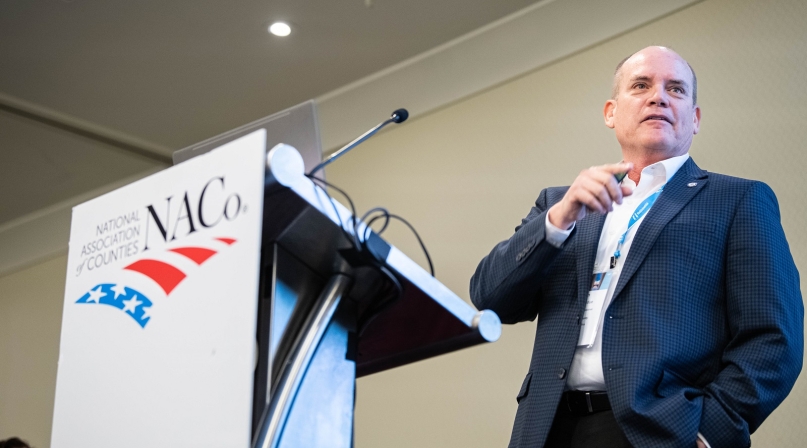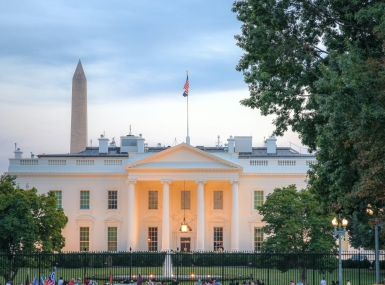‘When we’re not connected, we’re not safe,’ because buildings block radio

Key Takeaways
In a room packed with about 100 conference attendees, Guilford County, N.C. Commissioner Alan Perdue gave a powerful presentation Saturday morning on the importance of clear communication among emergency responders.
Specifically, Perdue discussed with members of the Telecommunications & Technology Policy Steering Committee the importance of making sure that buildings do not block radio signals.
Learn more
A member of the Safer Building Coalition, Perdue said their goal is to eliminate “dead spots” in buildings that block radio signals during emergencies.
He told the room about taking his child to college and during a meeting about safety on campus, after being told that the college had an emergency alert system to send emails and texts to students, he asked the school whether they had coverage in every building.
“You could hear a pin drop,” he told the audience. “A plan isn’t worth anything if there is no coverage. First responders must be able to communicate with each other.”
Perdue urged county officials to look into the safety of commercial buildings in their communities. For example, he noted that LEED-certified buildings and Low-E glass windows in buildings can block cell signals.
A former fire chief with an extensive background in emergency management, Perdue noted that many TV shows about firefighters sometimes stretch the truth a bit. But he noted, before playing a clip from the TV program “Chicago Fire,” that what the audience was about to see was very close to reality. County officials in the room watched the clip, as emergency responders and civilians, trapped in an elevator shaft in a building that was on fire, were unable to communicate with personnel on the ground. Eventually they were able to communicate enough to get rescued, but not without some harrowing moments.
Afterward, Perdue noted the importance of coming up with a plan to find out if buildings, especially school buildings, are safe. He noted that his county is collaborating with Guilford County Schools to enhance communications capabilities for emergency responders, especially inside school facilities.
“Oftentimes, due to a misunderstanding of the critical nature of in-building communications, building owners and developers push back on the adoption of codes and standards requirements due to added costs,” he noted. “Having a clear understanding of the critical nature that in-building communications capabilities can have on emergency responders, like EMS, Fire and Law Enforcement, while performing their duties, is vital. Education about these solutions known as Emergency Responder Communication Enhancement Systems (ERCES) is a key factor for all stakeholders including policy makers.
“If policy makers are not briefed on this important issue, it makes it difficult for them to effectively work with building owners and developers within their jurisdictions to ensure policies are in place for emergency responders to communicate inside buildings,” he said. “Educational buildings are certainly one area where we expect our emergency responders to be able to effectively communicate when they enter a building to mitigate an incident. Everyone’s safety depends on it.”
Guilford County identified this issue in some of its aging public-school facilities, limiting the ability for first responder radios to easily connect to one another and requiring work-around systems to be utilized. As a result, the county is undergoing a significant modernization of its school infrastructure designs through recent voter approved school construction bonds passed in 2020 and 2022.
Attachments
Related News

White House signs Executive Order on state AI lawmaking
President Trump signed an Executive Order (EO) aimed at mobilizing federal agencies to challenge existing state laws on artificial intelligence.

Congress Considers Bills to Reauthorize State and Local Cybersecurity Grant Program
Congress is considering two bills to reauthorize the State and Local Cybersecurity Program

County Countdown – Dec. 1, 2025
Every other week, NACo's County Countdown reviews top federal policy advocacy items with an eye towards counties and the intergovernmental partnership.
